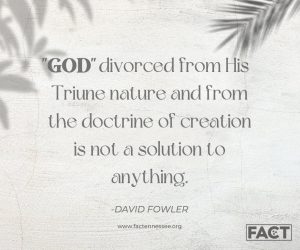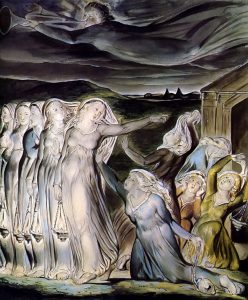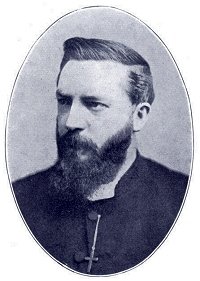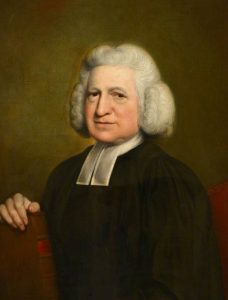Marriage is malleable only if God is subject to change. He isn’t.
Behold, the institution of marriage! It is one of the Creator’s most marvelous and enduring gifts to humankind. This divine plan was revealed to Adam and Evening the Garden of Eden and then described succinctly in Genesis 2:24, where we read, “Therefore shall a man leave his father and his mother, and shall cleave unto his wife and they shall be one flesh” (KJV). With those twenty-two words, God announced the ordination of the family, long before He established the two other great human institutions, the church and the government.”
—Dr James Dobson, in 20041—
This is a very important fight that we have on our hands to reclaim this issue of marriage for the public good that this is and we [must] continue to give this message. We need to fight back with the tools that we know work, which is love and compassion and doing what’s best for society.
—former US Senator Rick Santorum on the fight to preserve natural marriage, in 2014—
Key points: For the good of individuals and society, as well as for the sake of the gospel marriage represents, the church must reassert itself to uphold marriage as being between one man and one woman because of the divinely-fashioned differences between the sexes, as as being a gift from the Creator and a part of His created order, as being a picture of the gospel and Christ’s relationship with the church, and as being a picture of unity and diversity within the Godhead. All of these realities are theological or have theological roots that stand contrary to same-sex marriage. Even so, with few exceptions, Christian leaders who claim to love God and love His Word are ignoring them. Their lack of leadership has resulted in an increase of acceptance of same-sex marriage among believers, and in a massive number of believers who have a vague awareness that same-sex marriage is contrary to biblical teachings but can’t articulate why. This article issues a call to Christians and Christian leaders to uphold what the Bible teaches about marriage as it relates to the character, nature, and intentions of a benevolent and loving, yet holy, God.
All of the articles in this series are available on this page.
Last time we explored Jesus’ response to the Pharisees when they asked Him about divorce. Of course, the Jewish leaders were trying to trap Him; but as was consistently the case, Jesus would elude their best efforts. Repeatedly, He outsmarted them at every turn.
Asking Jesus about divorce necessarily meant asking Him about marriage. The provision allowing for divorce in Deuteronomy 24:1-4, Jesus indicated, was not God’s ideal. God allowed it “[b]ecause of the hardness of your heart.” God’s ideal for marriage was and is based on His design for the human race, which He revealed at creation. Those who cooperate with Him and His design find fulfillment and satisfaction in their lives. Rebelling against Him and His created order leads to one dead end after another.

“[F]rom the beginning of the creation, God ‘made them male and female,’” Jesus said, quoting from Genesis 1:27. He continued with a quote from Genesis 2:24: “‘For this reason a man shall leave his father and mother and be joined to his wife, and the two shall become one flesh.’” Jesus reiterated this truth, saying, “[S]o then they are no longer two, but one flesh” and then added, “Therefore what God has joined together, let not man separate.”
One Creator, Four Foundational Principles
On what foundation did God place marriage? Genesis tells us, and Jesus reiterated what Genesis says (see Gen. 1:26-28; 2:18-23; Mark 10:6). While in some instances Jesus’ reiteration of these principles is implicit rather than explicit, it is present nonetheless. God’s design for marriage rests on four broad realities or truths.
First, marriage is a part of God’s created order. God determined what would be; He established reality in His creation and in His created order. God’s design for humanity is woven into, and is an inseparable part of, God’s creation, which He brought into being at the beginning of time. Significantly, another way of saying this is includes use of a phrase the Founders of America employed in the Declaration of Independence. Marriage is a part of the fabric of “the Laws of Nature and of Nature’s God.”
Second, God’s design for humanity involves two sexes — male and female. God created the first members of the human race, and each member thereafter, as either a male or a female. Only two sexes exist within the human family; and because of the differences between the two and the realities arising out of those differences, marriage exists, and marriages occur.
Third, males and females are different and complementary. Males and females — men and women — are compatible. Among other things, this means that when a couple comes together to marry, the man, generally speaking, is the one better suited to be the protector and provider for the family. The woman, with her ability to bear children and even physically nourish them during their youngest stage, is better suited to nurture and to provide relational warmth and encouragement for the couple’s growing children. To summarize, men build houses, but women make homes. We see this distinction even in the disciplinary actions God took with regard to Adam and Eve, and their descendants as well, in the wake of the Fall in Genesis 3.
Of course, a father’s involvement with his children also is critical. Yet often fathers meet different needs than the mothers do, or they meet the same needs in different ways.

Here is an important disclaimer. The general pattern does not dictate the details of every situation or every marital relationship. Certain specific couples may decide together that for a variety of valid reasons unique to their situations, the wife will be the primary provider and the husband will stay at home; or they may deem it necessary for both to work outside the home. Children must remain a priority, however; and parents must be vigilant to adjust and readjust their plans, goals, and activities for the sakes of the children and the family at large.

That said, exceptions do not negate or overrule God’s design or the typical pattern. Consider the Christian couple. As long as they, both as individuals and as a couple, are submitting to Christ’s Lordship and are working together to honor Him and to meet the myriad needs of their children and each other, the husband and wife are in God’s will.
Fourth, human beings are unique among the members of God’s creation. God created every member of the human race, whether the individual is a male or female, in His own image.
Lest anyone the main point, both Genesis and Jesus emphasize that because of these realities (because is expressed as therefore in Genesis 2:24 and for this reason in Mark 10:7-8) “a man shall leave his father and mother and be joined to his wife, and the two shall become one flesh.”
Marriage Is About God: Five Theological Tie-ins
These and other passages of Scripture shed additional light on God’s design for the marriage relationship and all the Creator intends for it to accomplish and convey. Building on the passages we already have cited and adding to them, I’d like to emphasize five things to which natural marriage is inextricably tied, especially in relation to the church and Christian families. All of these are theological; they are about God. These items are reflected in non-Christian marriages, but to an even greater extent in marriages where both the husband and wife are believers. As we explore, it will become self-evident that no same-sex relationship ever can reflect these truths, but only the relationship of an opposite-sex couple, a husband and a wife.
First, marriage reflects both unity and diversity within the Godhead. Jesus said, “[S]o then they are no longer two, but one flesh.” Having quoted Genesis 2:24 in Mark 10:7-8, the Master Teacher underscored the “one-flesh principle” of man-woman marriage. A husband and wife are to become one flesh, not just physically, but on many levels, including relationally, socially, financially, and in other ways as well. While a married person’s individuality does not cease, it no longer has independence as its primary focus, but oneness with the marital partner.

We could say a great deal about this, but here we want to emphasize this point: Marital oneness reflects the oneness we see in the triune Godhead. In John 10:30, Jesus said, “I and My Father are one.” Jesus is God, but He is neither the Father nor the Spirit. In a variety of ways, He is different from each one. Yet there is unity among the Trinity’s Members.
We see evidence of the Trinity even before God made human beings. On the cusp of creating humanity, the Father, Son, and Holy Spirit discussed the matter.
26 Then God said, “Let Us make man in Our image, according to Our likeness; let them have dominion over the fish of the sea, over the birds of the air, and over the cattle, over all the earth and over every creeping thing that creeps on the earth.” 27 So God created man in His own image; in the image of God He created him; male and female He created them. 28 Then God blessed them, and God said to them, “Be fruitful and multiply; fill the earth and subdue it; have dominion over the fish of the sea, over the birds of the air, and over every living thing that moves on the earth” (Gen. 1:26-28).
Within the Godhead, as we have indicated, we see both unity and diversity. Not coincidentally, while both men and women are equal in worth and are equally made in God’s image, men reflect His image in a variety of ways that women typically do not, and vice versa. Let’s put it another way. Men and women are both human, yet they are different (also go here and here); there is unity and diversity among them. These are God’s “fingerprints” on His highest creation! To reiterate: The fact that human beings consist of both males and females represents not only the wide range of ways people showcase God’s image, but also the unity and diversity existing within the Godhead.
These truths lead us to an inescapable conclusion. While all people, both males and females, are made in God’s image, the one-flesh nature of man-woman marriage reflects His image in ways no individual man or woman can—and in ways no same-sex couple can, whether the state says they are “married” or not. Here we are in no way equating singleness with same-sex marriage. Nor are we disparaging single adults, whether they be Christians or non-Christians. Nor are we saying homosexuals aren’t made in God’s image. Indeed, they are, as are all human beings.
Rather, we’re upholding man-woman marriage as uniquely able to reflect the broad range of ways God’s image is evident in men and women, boys and girls. This is especially critical for children, whose first impressions about God come from their parents.

As much as natural marriage makes sense by virtue of all we learn about it from the natural world, it makes even more sense when we see it in light of God’s design and God’s intention to reflect His nature in it and through it. Ultimately, this realistic understanding of marriage anchors it to God Himself and His created order. Marriage redefined is marriage obliterated, because it contradicts the realities God wove into it “from the beginning.”
Marriage redefined is marriage obliterated, because it contradicts the realities God wove into it “from the beginning.”
Second, marriage reflects the gospel and Christ’s relationship with His bride, the church. In Ephesians 5, the apostle Paul wrote,
22 Wives, submit to your own husbands, as to the Lord. 23 For the husband is head of the wife, as also Christ is head of the church; and He is the Savior of the body. 24 Therefore, just as the church is subject to Christ, so let the wives be to their own husbands in everything.
25 Husbands, love your wives, just as Christ also loved the church and gave Himself for her, 26 that He might sanctify and cleanse her with the washing of water by the word, 27 that He might present her to Himself a glorious church, not having spot or wrinkle or any such thing, but that she should be holy and without blemish. 28 So husbands ought to love their own wives as their own bodies; he who loves his wife loves himself. 29 For no one ever hated his own flesh, but nourishes and cherishes it, just as the Lord does the church. 30 For we are members of His body, of His flesh and of His bones. 31 “For this reason a man shall leave his father and mother and be joined to his wife, and the two shall become one flesh.” 32 This is a great mystery, but I speak concerning Christ and the church.
I fear many Christians today find it difficult to deal with this passage without cringing over the word submit in verse 22. This is clear evidence of the culture’s influence over the church and individual Christians. Of course, we need to be sensitive to the perspectives and hurts of those we’re trying to reach—but note carefully—in verse 21, which immediately precedes the statements he makes about marriage, Paul writes, “submitting to one another in the fear of God.” Thus, the context affirms mutual deferment of self for others.
Even so, let us not miss the truth that responding to the gospel involves affirming Christ as Lord and surrendering to Him. As the husband and wife mutually submit to each other to meet each other’s needs, as the husband submits to Christ and loves his wife as Christ loved the church, and as the wife submits to her husband, the couple’s marriage becomes a vivid picture of Christ’s relationship with the church.
Yes, Jesus is Lord, and He rightly expects his followers to respond to Him with allegiance, devotion, and obedience. Yet, He never “lords it over” anyone. In fact, it is a joy to submit to Him. Likewise, no husband ever has the right to “lord it over” his wife.
Jesus is Lord, but He never “lords it over” anyone. Likewise, no husband ever has the right to “lord it over” his wife.
A church in England creatively presents the truth that marriage reflects the gospel of Christ in this video.
Unfortunately, 21st-century Christians in the West seem to be so slow to understand this, as well as its profound implications — despite the renewed emphasis on the importance of the gospel in evangelical circles. Our lack of understanding weakens our presentations of the gospel.
Failing to understand the connections between marriage and the gospel actually weakens our ability to effectively present the gospel.
“I am not ashamed of the gospel of Christ,” Paul declared. We can be certain he wasn’t ashamed of marriage, either, even though he may never have married. If we claim to be unashamed of the gospel but hesitate to defend marriage, perhaps we’re not as supportive of the gospel as we think.
Third, Christ’s relationship with the church, and His return to the earth in particular, are presented in Scripture as a wedding. Weddings and marriages, of course, are inseparably linked. Here is one of several passages showcasing a wedding as illustrative of Christ’s connection to His church.

Matthew 251 “Then the kingdom of heaven shall be likened to ten virgins who took their lamps and went out to meet the bridegroom. 2 Now five of them were wise, and five were foolish. 3 Those who were foolish took their lamps and took no oil with them, 4 but the wise took oil in their vessels with their lamps.5 But while the bridegroom was delayed, they all slumbered and slept.
6 “And at midnight a cry was heard: ‘Behold, the bridegroom is coming; go out to meet him!’ 7 Then all those virgins arose and trimmed their lamps. 8 And the foolish said to the wise, ‘Give us some of your oil, for our lamps are going out.’ 9 But the wise answered, saying, ‘No, lest there should not be enough for us and you; but go rather to those who sell, and buy for yourselves.’ 10 And while they went to buy, the bridegroom came, and those who were ready went in with him to the wedding; andthe door was shut.
11 “Afterward the other virgins came also, saying, ‘Lord, Lord, open to us!’ 12 But he answered and said, ‘Assuredly, I say to you, I do not know you.’
13 “Watch therefore, for you know neither the day nor the hour in which the Son of Man is coming. (Matt. 25:1-13).
Fourth, marriage, like the gospel, is about reproduction. At the dawn of time, God instructed Adam and Eve, the first married couple, to “Be fruitful and multiply.” Marriage is about reproduction; yet no same-sex relationship, even if it’s called a marriage, ever can reproduce.
The gospel is about reproduction as well. In fact, if anything has to do with reproduction, the gospel does! We see this clearly in New Testament. Go here for several examples.
It is noteworthy that God invariably uses His people—members of Christ’s bride, the church — as He draws non-Christians to Himself. Consider Paul’s conversion to Christ. Jesus supernaturally appeared to him on the road to Damascus, (see Acts 9:1-9), but God also sent his servant Ananias to him in Damascus to minister to him (add vv. 10-19).

Even those who have come to Christ by reading the Bible have read Scripture human beings have printed. God uses the words and influence of His people every day to bring people to Christ. Initially we might wonder why God has placed such a limitation on Himself, but we find the answer in the truth that His people are a part of Christ’s bride, the church. We know that in a marriage relationship, both the groom and the bride are involved in the reproductive process.
We need to be careful not to press this point too far, of course. It is the Holy Spirit who regenerates and gives new life. Still, the point is made. God does not work to reproduce spiritual life without involving the bride of Christ in the process; nor can we as members of Christ’s bride produce spiritual fruit without relying on Christ (see John 15:1-5). Spiritual fruit, of course, includes new Christians.
Fifth, the marital relationship itself is a mystery, a dynamic that also is intrinsic in Christ’s relationship with the church. Read Ephesians 5:22-33 and reflect on the word mystery in verse 32. The relationship between Christ and His church is mysterious on many levels, one of which we see reflected in the “way of a man with a young woman.” Proverbs 30:18-19 (NIV) declares,
There are three things that are too amazing for me,
four that I do not understand:
the way of an eagle in the sky,
the way of a snake on a rock,
the way of a ship on the high seas,
and the way of a man with a young woman.
Just as no one can trace the path an eagle takes in its flight “in the sky,” or the path of a snake as it moves “on a rock,” or the route of a ship as it travels across the water, so, too, is “the way of a man with a young woman” mysterious. In fact, “the way of a man with a young woman” is uniquely mysterious. No same-sex “marriage” has any comparable relational mystery.
All same-sex relationships lack the relational mystery inherent in heterosexual bonds.
Significantly, it is the differences between a man and a woman that provide the platform for a healthy marriage (see Gen. 2:18-25); and similarly, it is the differences between Christ and His church (and what those differences are) that set the stage God to initiate a rescue operation to save humanity.
In his insightful book, Growth into Manhood, former homosexual Alan Medinger highlights four sets of contrasting qualities between masculinity and femininity. The second of these is that the essence of masculinity is initiation and the essence of femininity is response. Medinger observes that since God is the ultimate initiator, it is entirely appropriate that He would reveal Himself in the masculine role of Father. We, as responders to God, are all feminine in this sense. Moreover, Medinger notes, it is fitting that we who are followers of Christ are called His bride.2 This is at the heart of the gospel’s good news!3

We do well to elaborate a bit more. In the plan God implemented to save sinners, Christ, God’s Son, came to earth as a man and pursued those in need of Him so they could experience His love and forgiveness and become His bride. Hymn writer Samuel John Stone (1839-1900) expressed it this way:
The Church’s one foundation
is Jesus Christ her Lord;
she is his new creation,
by water and the word:
from heaven he came and sought her
to be his holy bride;
with his own blood he bought her,
and for her life he died.

This hymn by Charles Wesley also comes to mind.
And can it be that I should gain
An int’rest in the Savior’s blood?
Died He for me, who caused His pain?
For me, who Him to death pursued?
Amazing love! how can it be
That Thou, my God, should die for me?
Amazing love! how can it be
That Thou, my God, should die for me!
Of course, we must be careful here, because the husband does not save his wife by imparting eternal life to her. Only the Sprit of God can do that. Both the husband and his wife, like all members of the human race, are saved by placing their faith in Christ as Savior and Lord. Nevertheless, there is an element of mystery in the relationship of a man and his wife that parallels and mirrors the mystery involved in Christ’s relationships with those who are members of His bride, the church.
Marriage: Rooted in Creation, Deeply Theological and Reflective of God’s Nature, and a Picture of the Gospel
Let’s review. In this post, we’ve highlighted four principles on which marriage rests.
-
-
-
- Marriage is a part of God’s created order.
- God’s design for humanity involves two sexes — male and female.
- Males and females are different and complementary.
- Human beings are unique among the members of God’s creation because God made them in His own image.
-
-
We went on to explore five theological tie-ins linking marriage to God and His created order.
-
-
-
- Marriage reflects both unity and diversity within the Godhead.
- Marriage reflects the gospel and Christ’s relationship with His bride, the church.
- Christ’s relationship with the church, and His return to the earth in particular, are presented in Scripture in terms of a wedding.
- Marriage, like the gospel, is about reproduction.
- The marital relationship itself is a mystery, a dynamic that also is intrinsic in Christ’s relationship with His bride, the church.
-
-
Were these nine items understood by Christians today, they as individual believers, as well as the church as a whole, would soundly reject the idea that same-sex couples can “marry.”
Pastors, Christian educators, and other Christian leaders are not doing their jobs to educate the people in their charge on this critical issue. Take note! This is an issue with profound spiritual, moral, ethical, and cultural implications.
Is it because this issue has cultural implications that pastors are shying away from it? If so, they have inadequate views of God’s Word and God’s authority.
Marriage can’t be redefined any more than God is subject to change. And God has made clear that He never will change.
Pastors and other Christian leaders, where are you?
Note: This article is the 400th article I’ve written and published at Word Foundations since it began in March/April of 2015. In that period, I also have published several Bible studies at Discover Bedrock Truth. Word Foundations is committed to offering INSIGHTS AND COMMENTARY FROM A BIBLICAL PERSPECTIVE, and Discover Bedrock Truth to offering Bible study “maps” for MINING NUGGETS OF TRUTH FROM GOD’S WORD AND WORLD.
Thank you, dear reader, for exploring these realities with me. A pastor of mine once said, “Some preachers ask, ‘Should I limit my preaching to the Bible?’ That’s like a minnow’s saying, ‘Should I limit myself to the Pacific Ocean?'” I agree. While in one sense, we have explored a great many important and relevant truths during our 7-year journey, in another we have only begun to scratch the surface! Our journey of discovery continues!
Thanks for joining me!
—B. Nathaniel Sullivan—
Copyright © 2022 by B. Nathaniel Sullivan. All rights reserved.
Unless otherwise indicated, Scripture has been taken from the New King James Version®. Copyright © 1982 by Thomas Nelson, Inc. Used by permission. All rights reserved.
One Scripture passage, cited at the top of this article, has been marked NIV and is taken from The Holy Bible, New International Version®, NIV® Copyright © 1973, 1978, 1984, 2011 by Biblica, Inc.® Used by permission. All rights reserved worldwide.
1Dr. James Dobson, Marriage Under Fire: Why We Must Win this Battle, (Sisters, Oregon: Multnomah Publishers, 2004), 7.
2Alan Medinger, Growth into Manhood, (Colorado Springs, CO: Shaw, 2000), 85.
3Some points of clarification are in order. We should note that both men and women are members of God’s highest creation, for God made both in His image. At the same time, as we have said, God has revealed Himself to humanity in masculine terms, as a Father. This does not mean we never see evidence of feminine traits in God or in His dealings with humanity (here is one such example).
These previously-released Word Foundations articles/posts/pages contain information used or cited in this article.
Upholding God-Ordained Marriage Is One of the Greatest Ways to Advance the Gospel, Part 8
Upholding God-Ordained Marriage Is One of the Greatest Ways to Advance the Gospel, Part 9
Upholding God-Ordained Marriage Is One of the Greatest Ways to Advance the Gospel, Part 10
An Excerpt from “Myths that Led to Recognition of Same-Sex Marriage in the United States, Part 2”
Upholding God-Ordained Marriage Is One of the Greatest Ways to Advance the Gospel, Part 1
Upholding God-Ordained Marriage Is One of the Greatest Ways to Advance the Gospel, Part 3
The Gospel Is About Reproduction


Be First to Comment